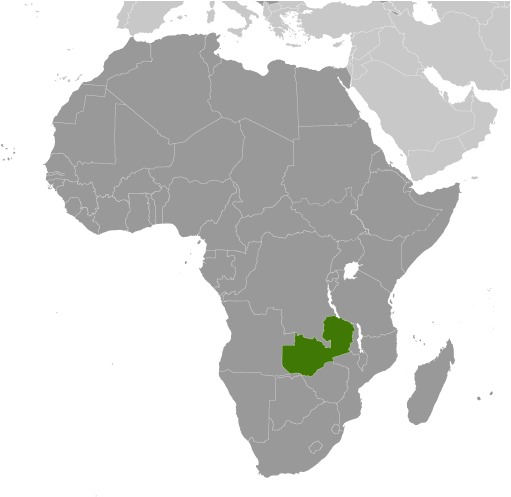
Customs and Cuisine of Zambia
The African nation of Zambia (named after the Zambezi River) has a rich history, with diverse cultures including Bantu-speaking groups, migrants from the Zulu Kingdom and others. In fact, human civilization began in the area at least 3 million years ago. The area was colonized by the British in the 1880s and renamed Northern Rhodesia in 1911. The country became Zambia after securing independence from the UK in 1964.
Slightly larger than the US state of Texas, Zambia is home to more than 20 million people. Its major languages are in the Bantu family. The population is young, and poverty is high. Though the total fertility rate has declined, it remains among the world’s highest, with an average of almost six children per woman. Visiting or living in Zambia means facing a high risk of infectious diseases, currently including polio.
To date, Zambia has pockets of extreme food insecurity. This has been made worse by a devastating drought that is currently decimating much of the country. According to the UN, this is the driest agricultural season in Zambia in more than 40 years. The drought is worsening poverty, and as is so often the case during times of crisis, rates of gender-based violence are increasing as a result. Corn is the cornerstone of Zambian cuisine, but the UN is working with farmers to diversify crops as a measure of protection against the current drought and overall climate change.
For more
- Visit here for an interesting lesson on Zambia food and dining etiquette.
- Zambia is home to one of the world’s largest bat migrations (5 to 10 million bats). Learn more about it at com/places/kasanka-bat-migration.
- According to the World Food Programme, smallholder farmers produce 90 percent of Zambia’s food. Most are women. Read more about efforts to find solutions to hunger and climate change.
Challenges facing women and girls in Zambia
Women and girls in Zambia face a patriarchal society that demeans women and leads to negative outcomes.
Poverty – In Zambia, over 75 percent of the rural population survives on less than $0.64 a day. Many are subsistence farmers. Economic opportunities for women in these rural communities are scarce.
Menstruation – Zambian girls lack critical menstrual health hygiene materials and knowledge, leading to poorly managed menstrual health hygiene. This contributes to 4 ti 5 missed school days each month.
Cultural norms – The Zambian culture is based on patriarchal, conservative values across tribes. The men have the power and make the decisions, while the women are expected to be subordinate. This goes for ownership and inheritance of assets as well.
Dual legal system – Zambia’s legal system consists of both civil law and customary law. To resolve disputes, many rural Zambians use customary laws observed by their tribe. These disputes may involve access to land, inheritance, property, and marriage. Unfortunately, the customary laws can be discriminatory against women.
Lack of education – Less than a third of Zambian girls finish primary school and only eight percent complete secondary school. This is due to early marriages and pregnancies, as well as a lack of access to menstrual hygiene products and facilities. Women with limited education are often excluded from business opportunities, thus keeping the cycle of poverty alive.
Low literacy – Stemming from a lack of education, low literacy makes girls and women vulnerable in many ways. This is especially true when it comes to understanding their rights and their sexual and reproductive health.
Sources:
https://www.cia.gov/the-world-factbook/countries/zambia/
www.unwomen.org/sites/default/files/Headquarters/Attachments/Sections/CSW/64/National-reviews/Zambia.pdf
https://www.civicus.org/index.php/media-resources/news/interviews/5641-zambia-our-aim-is-to-break-societal-biases-against-girl
https://www.zambiatourism.com
https://zambia.un.org/en/268038-zambia-drought-response-appeal-may-2024-december-2024-may-2024
View Recipes from Zambia
Zambia
